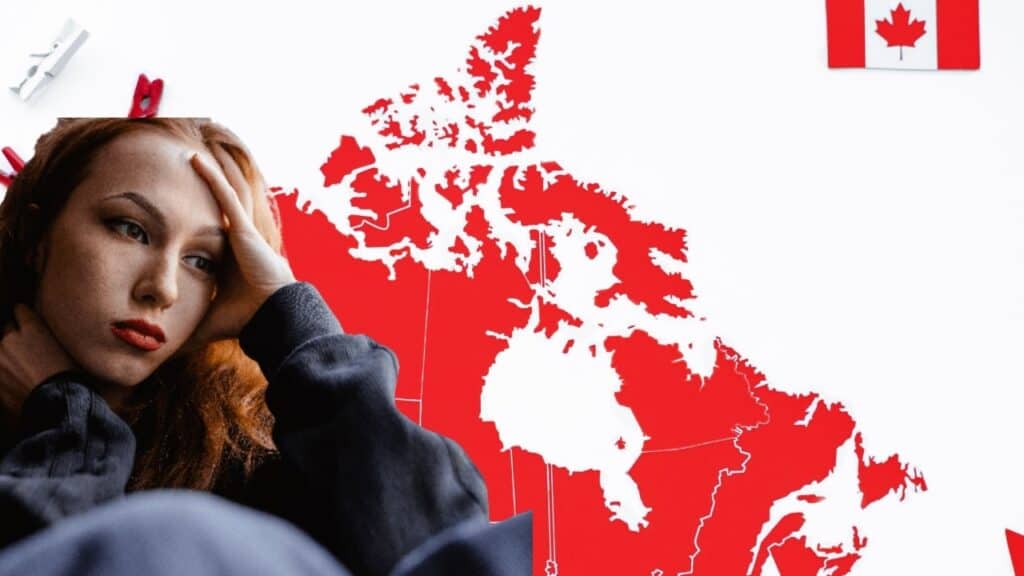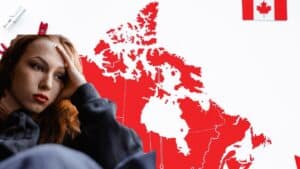
We hope that you and your family are safe, healthy and secure during this COVID-19 pandemic.
Ira Smith Trustee & Receiver Inc. is absolutely operational and Ira, in addition to Brandon Smith, is readily available for a telephone consultation or video meeting.
If you would like to listen to the audio version of this Brandon Blog, please scroll to the very bottom and click play on the podcast.
Canada’s debt burden growing for Canadians: 2021 Edition
Canada’s fiscal policy faces many challenges, according to the Fraser Institute. The federal and many provincial governments face serious financial challenges due to budget deficits and increasing accumulation of debt. As interest payments increase, there will be less money left for tax cuts, education, and social services. In the aftermath of COVID, the federal and provincial governments must develop long-term plans to address Canada’s growing debt problem.
Canada’s debt burden continues to be the talk of the town in this age of global statism. It’s always cited by statists that Canada’s federal debt is 100+ percent of GDP compared with 80 percent in the early 1980s. It’s even considered a threat to Canada’s sovereignty, a moral hazard, and a burden on future generations by some. However, individuals’ personal share of Canada’s debt burden may not be growing. I will explain some interesting Statistics Canada reporting in this Brandon Blog post.
Canada’s debt burden: The coronavirus is why provinces need financial assistance now
In 2020, the Premier of Newfoundland and Labrador wrote to Justin Trudeau, saying that his province faced an “immediate and urgent financial crisis” and was unable to raise short- and long-term funds.
During the critical period, the letter explained, the government has no alternative methods of funding provincial government operations, including its health care system. The Bank of Canada offered to buy 40 percent of all new provincial bonds four days after the letter was sent.
The province has been hit with a public health crisis of unprecedented proportions, and their provincial peers, who have similar debt-to-GDP ratios, are not far behind. It is likely that the government can do the same for provinces and municipalities that have to shoulder heavy coronavirus-related costs if it can provide zero percent loans to small businesses.
By law, it can.

Is Canada’s debt burden a cause for concern?
Following a federal budget deficit of $354.2 billion last year, the Trudeau government budget documents show that the Feds anticipate a deficit of $154.7 billion in 2021/22, and deficits of at least $30 billion for another four years thereafter. There has been a significant increase in debt accumulation. During the next two years, the country’s net debt-to-GDP ratio is expected to rise to 55.3 percent. In spite of low-interest rates, government program spending in 2021/22 is expected to increase by more than 40 percent over 2019/20. Despite the prime minister’s vague promise that a balanced budget will be achieved at some point, there is no timeline for that.
Can Canadians expect a bout of inflation to continue rising? Can we expect an increase in interest rates? Do you expect a depreciation of the exchange rate? Is it possible that the government will default at some point? Are there any limits on the size of the debt?
Over the years, various economists have noted that federal government debt is not the same as “debt” in the way that the term is commonly understood. Even if it means working harder or cutting back on our spending, we expect to have to pay back debt at some point.
Unlike a government, a household has a finite lifespan. The government, however, can, in principle, refinance (rollover) its debt indefinitely while a household must eventually pay off its debt. Governments do not have to worry about involuntary defaults when they finance themselves with convertible debt.
As a burst of inflation has already begun, we should prepare for possible temporary spikes. Governments borrow money because they don’t spend all of their income right away. Some of it is saved until later. Therefore, future tax revenues can be increased without increasing current taxes. Thus, as real incomes increase, consumer spending increases, which in turn generates additional tax revenue. Therefore, the economy grows more rapidly than it would ordinarily.
How does the government handle overspending? Governments need to reduce spending sooner than later when they run up a level of borrowing that is unsustainable. If it does not, then raising taxes is the only option left. Those who are old enough to recall the 1970s know that high taxes tend to slow down economic growth.
Although prices haven’t risen too much so far for Canadians, their rise is inevitable and the end does not seem too close right now. Inflation concerns seem to be making daily headline news. Nonetheless, many people fear that living costs will continue to rise forever.
So that is the government. What has happened to individuals and their contribution to Canada’s debt burden over the last 18 months?
Canada’s debt burden: Canadian Debt To Assets Falls To Nearly Two-Decade Low
According to Statistics Canada, family financial debt is at its lowest level in the last two decades as a percentage of the overall household assets. Throughout the last twenty years, the debt-to-assets proportion has actually never ever been below its long-term average as it is now.
Therefore, Canadians are less likely to file for bankruptcy than in the past. This is supported by statistics on bankruptcies over the past 18 months. David Madani, senior director at Capital Economics, called it rather remarkable.
According to CNBC, Canadian consumer credit rose 0.5%, but non-financial corporate borrowing of business loans declined 1%. Lending to consumers is up. Consumer lending annual growth is primarily fueled by a substantial increase in mortgages and home equity loans, as I mentioned in previous Brandon Blogs. Debt on credit cards has steadily reduced during the pandemic. Three billion dollars more than expected was borrowed by non-financial companies.

Canadian Household Wealth Soars, Canadian’s Debt Burden Drops Amid Pandemic: Statistics Canada
I will now turn my attention to the household wealth side of the ratio now that I have discussed the debt side. What’s behind the rise of wealth? The rise in wealth can be attributed to a number of factors:
- prices for stocks and houses soaring;
- a generous income support program from the government for jobless individuals;
- during lockdowns, there are fewer things to spend money on.
Households have saved an estimated $90 billion as a result.
Amid the worst economic downturn in decades, Canadian households are seeing wealth hit a record high while debt burdens shrink relative to income. That is really the entire rise in household wealth story.
Compared to debt, Canadian wealth soared, but the bank executive warned that this might only be a mirage
Debt-to-assets fell to their lowest level since the early 2000s. In response to this, a Bank Exec at the National Bank of Canada believes it produces a “wealth effect” whereby consumers feel wealthy and then spend more. Why not get a new expensive truck for your driveway if you live in a million-dollar house?
Although Canadian banks are warning about the inevitability of rising interest rates and slowing economic growth, some economists say Canadians may be feeling wealthier than ever before. This could mean consumers will start spending again after years of saving for retirement or paying off debt. Capital Economics senior economist David Madani stated, “We’re seeing an increase in wealth.” Consumption is likely to pick up.” He says higher-priced items like cars and houses have also taken over.
Statistics Canada data shows household assets have soared this year. The housing boom created significant equity with little actual financial contribution from owners. When it comes to Canada’s debt burden or a family’s household debt, it’s important to look at the right statistics. It’s also important to remember the most important point about debt is not the debt itself. It’s the ability to pay it back.

Canada’s debt burden: Where the heck does my money go?
This is a common question we always hear from people who come to us with financial problems.
I hope this Canada’s debt burden Brandon Blog was informative. With too much household debt and not enough wealth, you are insolvent. You can choose from several insolvency processes. It may not be necessary for you to file for bankruptcy.
If you or your business are dealing with substantial debt challenges, you need debt help, and you assume bankruptcy is the only option, call me.
It is not your fault that you remain in this way. You have actually been only shown the old ways to try to deal with financial issues. These old ways do not work anymore.
The Ira Smith Team utilizes new modern-day ways to get you out of your debt difficulties with debt relief options as an alternative to bankruptcy. We can get you the relief you need and so deserve. Our professional advice will create for you a personalized debt-free plan for you or your company during our no-cost initial consultation.
You are under a lot of pressure. Our team knows how you feel. You and your financial and emotional problems will be the focus of a new approach designed specifically for you. With our help, you will be able to blow away the dark cloud over your head. We will design a debt settlement strategy for you. We know that we can help you now.
We understand that people with credit cards maxed out and businesses facing financial issues need a realistic lifeline. There is no “one solution fits all” method with the Ira Smith Team. Not everyone has to file bankruptcy in Canada. The majority of our clients never do as we know the alternatives to bankruptcy. We help many people and companies stay clear of filing an assignment in bankruptcy.
Because of this, we can develop a new method for paying down your debt that will be built specifically for you. It will be as unique as the economic problems and discomfort you are experiencing. If any one of these seems familiar to you and you are serious about getting the solution you need to become debt-free, contact the Ira Smith Trustee & Receiver Inc. group today.
Call us now for a no-cost consultation.
We hope that you and your family are safe, healthy and secure during this COVID-19 pandemic.
Ira Smith Trustee & Receiver Inc. is absolutely operational and Ira, in addition to Brandon Smith, is readily available for a telephone consultation or video meeting.
canada’s debt burden
